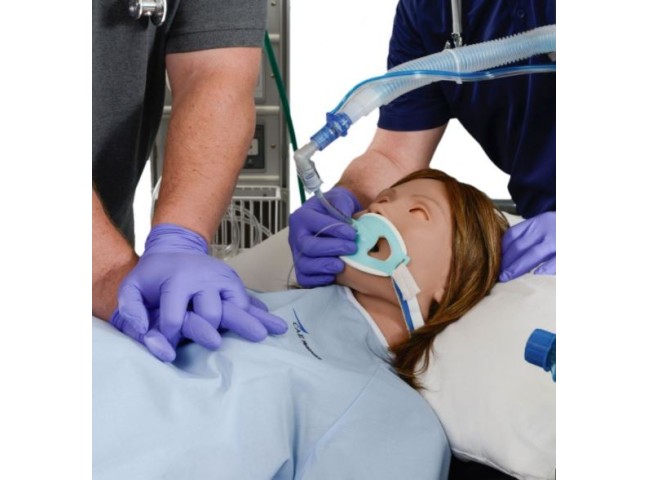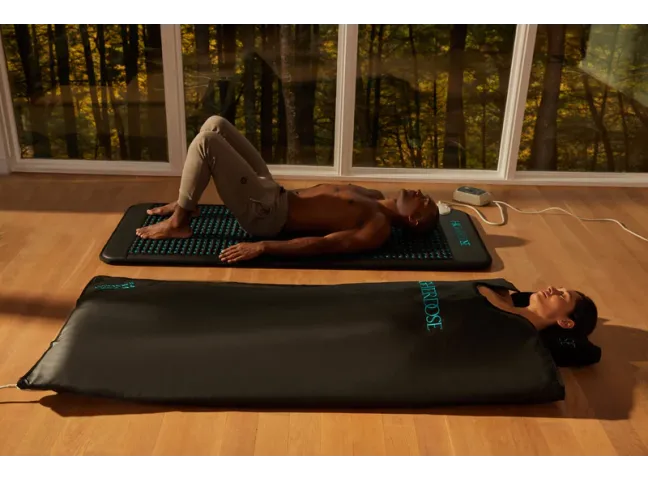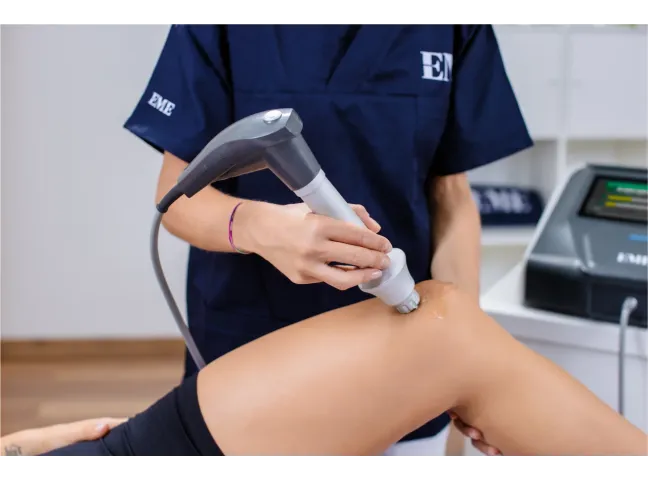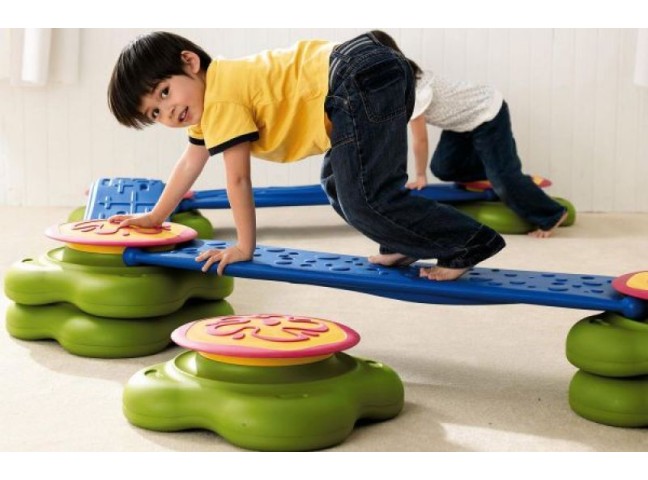Urinary incontinence is the inability to control urination. The term can be used interchangeably with overactive bladder (OAB), which also involves the same frequency of urination and urge to urinate. People suffering from overactive bladder or urinary incontinence cannot hold their urine – they leak.
Types of Urinary Incontinence:
Urinary incontinence is classified based on the symptoms or circumstances that occur during urine leakage.
- Stress incontinence: The cause of stress urinary incontinence is often weak or damaged pelvic floor muscles. Increased pressure on the abdomen, such as during pregnancy or obesity, is another cause of stress urinary incontinence.
- Urge incontinence: It occurs when the bladder contracts too actively even when you don't want it to. You may feel like rushing to the bathroom, have urgency, and leakage can occur before reaching the toilet. The bladder can become too active due to an infection that irritates the bladder lining. Nerves that usually control the bladder can also be responsible for an overactive bladder.
- Mixed incontinence: It is often a combination of both stress and urge incontinence.
- Overflow incontinence: It occurs when the bladder is allowed to become so full that it simply overflows. This happens when a weaker bladder is obstructed and does not allow proper emptying. Enlarged prostate can cause such obstruction. Because of this, overflow incontinence is more common in men than women. Bladder weakness can develop in both men and women, but it often occurs in people with diabetes, heavy alcohol consumers, and others with weaker nerves.
- Functional incontinence: It occurs when people cannot access a toilet when they need to. The urinary system may function well, but physical or mental disabilities or other circumstances prevent normal toilet use.
- Nocturnal enuresis is urinary incontinence that occurs during sleep.
When individuals have two or more types of urinary incontinence, it is necessary to identify the causes of each and consider them when planning appropriate treatment.
What can be done about urinary incontinence?
Since there are many different types of urinary incontinence and various causes, there are many different forms of medical treatment available, so it is important to get a proper diagnosis by consulting with your healthcare provider.
To help oneself, the first step is to take measures and actions that would reduce urinary incontinence.
Recommended steps include:
- Quit smoking. Smoking increases the risk of urinary incontinence because coughing strains the pelvic floor muscles.
- Do proper exercises. High-impact exercises and squats stress the pelvic floor muscles and can increase leakage. To strengthen the pelvic floor and alleviate symptoms, replace high-impact exercises like jogging and aerobics with strengthening exercises like Pilates. Pilates strengthens core muscles, which is beneficial for stress urinary incontinence.
- Avoid heavy lifting. Lifting puts stress on the pelvic floor muscles, so avoid it when possible. When you need to lift something, like picking up children or shopping bags, contract your pelvic floor muscles before and during lifting.
- Lose excess weight, if overweight. Being overweight can weaken pelvic floor muscles and cause urinary incontinence due to pressure from fat tissue on the bladder. Your symptoms may improve or disappear entirely if you lose excess weight. Use a healthy weight calculator to check if you are at a healthy weight for your height.
- Treat constipation promptly. Straining during bowel movements weakens pelvic floor muscles and worsens urinary incontinence. Never ignore the urge to defecate. If you have constipation, changing your diet and lifestyle can help. Eating more fiber and exercising more can help. Changing your sitting posture and using muscles to empty your bowels can also help. A physical therapist can advise you on this.
- Reduce caffeine intake. Caffeine irritates the bladder and can worsen urinary incontinence. Coffee has the most significant impact, so stop drinking it or switch to decaf. Caffeine is also present in carbonated drinks, tea, green tea, energy drinks, and hot chocolate, so reduce its intake and replace it with water, herbal teas, or fruit teas.
- Cut back on alcohol consumption. Alcohol is a diuretic, causing more frequent urination. Reducing it can help with urinary incontinence symptoms.
- Drink plenty of water. Aim to drink 6–8 glasses of fluids per day (but not more) unless directed otherwise by your doctor. Many people with urinary incontinence avoid drinking fluids because they think it causes more problems. However, limiting fluid intake worsens urinary incontinence because the bladder capacity decreases. Insufficient fluid intake can also lead to or worsen constipation.
- Eat the right foods. Avoid spicy and acidic foods, such as curry and citrus fruits, as they can irritate the bladder and worsen leaks and other urinary incontinence symptoms.
WAYS TO HELP WITH URINARY INCONTINENCE:
The treatment of urinary incontinence depends on its type, severity, and underlying cause. A combination of treatments may be needed. Your doctor will likely suggest the least invasive treatment methods first and move on to other options only if these methods fail.
Before considering surgery, all urinary incontinence treatment options need to be tried:
Behavioral techniques:
- Bladder training. This involves delaying urination when you feel the urge to go. (i.e., "holding it in"). Start by trying to hold it for 10 minutes every time you feel the urge to urinate. The goal is to lengthen the time between trips to the bathroom until you urinate only every two or four hours.
- Double voiding. This involves learning to fully empty the bladder to avoid overflow incontinence. Double voiding means urinating, then waiting a few minutes and trying again.
- Scheduled toilet trips. Urinate every 2–4 hours instead of waiting until you need to go.
- Fluid and diet management. To control the bladder, you may need to avoid or at least reduce alcohol, caffeine, or acidic foods. Reducing fluid intake, losing weight, or increasing physical activity can also ease the problem.
Pelvic floor muscle exercises
Your doctor may recommend doing these exercises frequently to strengthen muscles that help control urination. Also known as Kegel exercises, these methods are especially effective for stress urinary incontinence but can also help promote urinary continence.
First, imagine trying to stop the flow of urine. Then:
• Contract (squeeze) the muscles you would use to stop urinating and hold for 5 seconds, then relax for 5 seconds (If this is too difficult, start by holding for 2 seconds and relaxing for 3 seconds.)
• Hold the contractions for 10 seconds each time.
• Aim to do at least three sets of 10 repetitions daily.
To help identify and contract the right muscles, you may want to work with a physical therapist or try biofeedback methods.
Electrical stimulation
This method involves temporarily inserting electrodes into the rectum or vagina to stimulate and strengthen pelvic floor muscles. Gentle electrical stimulation can be effective for stress and urge incontinence, but several treatment sessions over several months may be needed.
Medications
The most commonly used medications for urinary incontinence are:
- Anticholinergic drugs. They calm an overactive bladder and can be helpful for urinary incontinence.
- Mirabegron (Myrbetriq). This medication, used for urge urinary incontinence, relaxes the bladder muscles and may increase the amount of urine the bladder can hold. It can also increase the amount of urine passed at once, which helps fully empty the bladder.
- Alpha-blockers. For men with urinary incontinence, these drugs relax the bladder neck muscles and prostate smooth muscle and ease bladder emptying.
- Local estrogen. Using low-dose vaginal estrogen in cream, ring, or patch form can help tone and rejuvenate tissues in the urethra and vaginal areas and reduce some urinary incontinence symptoms.
Medical devices
Devices for women with urinary incontinence:
- Urethral insert. A small, tampon-like disposable device is inserted into the urethra before certain activities like tennis that may trigger urinary incontinence. It acts as a plug, preventing leakage, and is removed before urinating.
- Pessary. A firm ring is inserted into the vagina and worn throughout the day. This device helps support a bladder that has dropped down (prolapsed bladder) to prevent urinary leakage and may be recommended for urinary incontinence due to a dropped bladder or uterus.
- Absorbent pads and catheters.
Take care of yourself, eat healthy food, manage your weight, and exercise regularly. Perform pelvic floor exercises daily to strengthen muscles and stop urinary leakage. It will take a lot of patience and time to feel the benefits and results.
Do you have any questions?
If you have any questions, please contact the Rehastar.com store staff by phone on weekdays from 08:00 to 17:00 or by email at any time, and we will try to respond to you as soon as possible.
Email: info@rehastar.com
Phone: +370 626 11553






